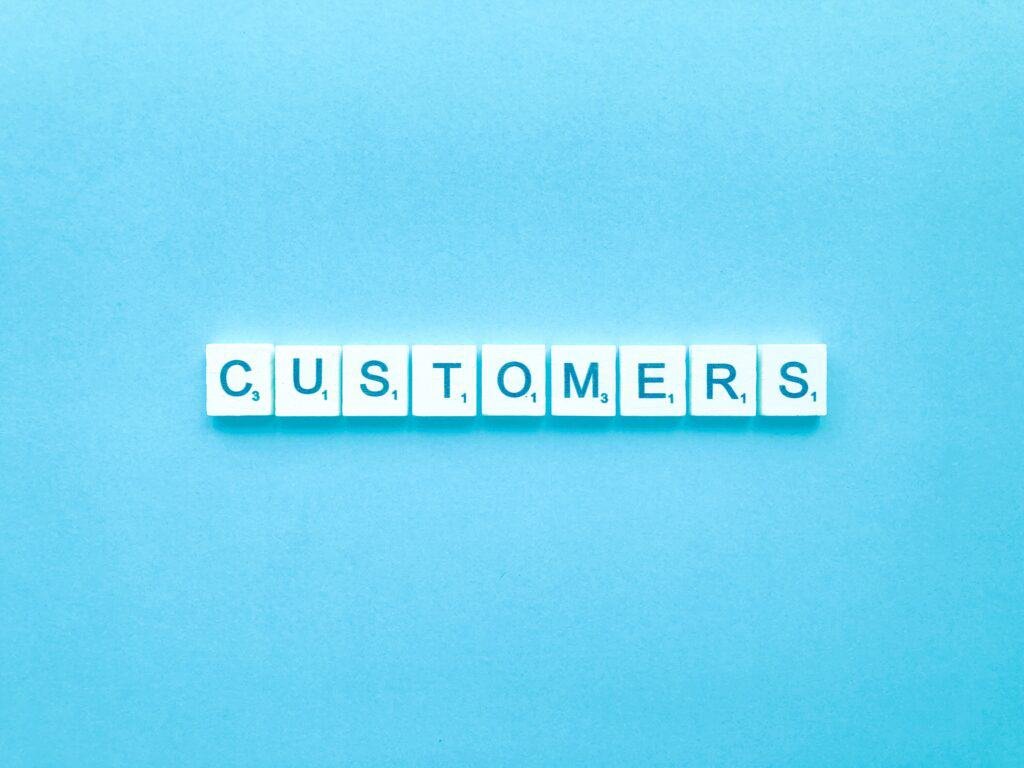“A post purchase evaluation is a technique used to measure the satisfaction of customers who have made purchases.”
The post purchase evaluation process is a unique opportunity to learn about your customers and how they perceive your products or services. These evaluations can help you win life-long customers, as well as improve the quality of your product or service. This article will talk about what post purchase evaluation means and how it works, with examples from companies like Amazon and Apple. We’ll also cover ways that you can use these evaluations to increase sales!
Jump Ahead To :
What Is Post Purchase Evaluation?

Post purchase evaluation is a way to see how customers feel about a product after they have received it. This allows companies to improve their products or services and make them better for all future buyers.
In addition, these evaluations are conducted after a product is purchased. They can be used to determine if the product was worth its price and help decide whether or not the company made an informed decision when they decided to buy it.
They also help companies decide how much support should be given for future product updates, etc. Post-purchase evaluation is generally done using surveys and questionnaires where users can give their opinions about your products with no bias involved. This is because these post-purchases happen at least sometime after they have already received and started using your products which means most negative feelings that could arise from them giving biased answers would have been settled down by then. In this way, post purchases can be conducted professionally and help companies make better decisions in the future.
Post-purchase evaluations are also called post-purchase feedback or post-sale customer satisfaction surveys.
They are important to ensure you’ve made the right decision. It helps verify whether your product or service has met customer expectations which it was designed for and if not, then why? Post purchase evaluations help companies learn from their mistakes to improve upon their future products or services. They also consider what great features of the product are loved by consumers and potential concerns with any flaws in design; these issues may be taken up directly with designers and engineers, respectively.
This process allows businesses to make changes before a major alteration occurs after sales begin decreasing due to dissatisfied customers who may find another brand more worthwhile than yours! Spreading awareness about these evaluations will hopefully encourage better practices and better products.
The evaluation process starts with the buyer using the product as intended, then asking questions from them at different times of use depending on what stage they are in before finally reaching out once again when its time has come that needs replaced.
The Consumer Post Purchase Evaluation Process

When a consumer has purchased something, post-purchase evaluation may be an important part of the process. Consumers try to find out how satisfied they are with their purchase decision after using or consuming it for some time. The post-purchase evaluation is done by assessing whether or not expectations were met and if there are any unexpected results from this purchase.
These evaluations can also be conducted on new brands that have been tried before returning to the old brand, which was previously trusted more. When consumers make post-purchase decisions based upon product satisfaction rather than pre-purchase attitudes, sales will increase because customers who buy products due to positive post-purchasing thoughts tend to continue buying them again in the future as well.
Post-purchase evaluations are also conducted to gather information on the post-purchase process of competitors. This evaluation is important because it helps businesses learn what consumers expect from their products. They use this new knowledge in improving future versions or even come up with better ideas for completely new products that would fulfil customers’ needs more thoroughly than before.
People want to know how satisfied they are after buying something, especially when there have been some unexpected results that need a further investigation about whether an error on someone’s part caused these or if instead, people didn’t realise all the good things a product had to offer at first glance. Post-purchase evaluations provide opportunities for improvement but can also be used as negative feedback, which many companies don’t take too kindly to.
Examples of Post Purchase Evaluation

Post-purchase evaluations are a great way to learn from your customers. Your post-purchase evaluation examples can provide valuable insight into what works and doesn’t work for your potential audience. This information will help guide future marketing efforts and any new product or service development that may occur down the line.
There are many different kinds of post-purchase evaluation examples, so it’s important to know which one(s) would benefit you most in figuring out how to better appeal to your target market/customers. Below we have outlined some common post-purchase evaluation examples:
Post-purchase evaluation examples include post-purchase feedback, post-sale customer service and post-transaction analysis. For example, some companies provide online questionnaires where customers can evaluate their experience with their products or services after buying them.
Another option is sending out post-sale surveys via email asking for feedback on specific aspects of the product that were important to the consumer during their purchase decision-making process (e.g., price/value relationship; ease of use) as well as measures on how likely it would be for them to recommend this brand to a friend or colleague (post transaction recommendations).
The third type of post-purchase evaluation is analyses performed by retailers to identify reasons why consumers abandoned an eCommerce transaction.
Benefits Of Carrying Out Post Purchase Evaluation
Post-purchase evaluation can help you to:
– Identify areas for improvement
– Assess the success of previous marketing strategies and campaigns
– Reflect upon & learn from your successes & mistakes.
Post-purchase evaluations are one way to ensure that what you do is in line with the needs, expectations and wants of your clients/customers. You should be providing them with something they will benefit from or at least enjoy using. These evaluations allow an organisation to identify gaps in customer service and provide insight into how it may improve services moving forward. This information could then potentially be used by Marketing teams when devising new marketing material (e.g., promotional emails). If there aren’t any opportunities to improve products or services, these evaluations are also great to prove this. Post-purchase evaluation is beneficial for Marketing teams; it can help all departments within an organisation and external stakeholders (e.g., suppliers).
For example, if you have just launched your brand new product, which was highly anticipated by customers/clients, the post-purchase evaluation would be the ideal time to identify what went right and wrong regarding launching a said product – both internally & externally. You could then use that information in future marketing strategies or when communicating with retailers who stock your products.
How do I find out if my customer wants me to evaluate their experience?
There are many different ways of carrying out a post-purchase questionnaire; however, some common methods include;
– Phone call (if you have their contact number)
– On your website, perhaps as part of a pop-up window. This allows the client/customer to reflect upon and complete it at a convenient time for them – whether that be on their smartphone or tablet during commute home from work, whilst relaxing over dinner etc. It also reduces any potential barriers such as: not having access to paper & pencils if they’re away from home and unable to print off an email questionnaire. If they complete the survey online, there is no requirement for additional personal information, so you can keep all responses completely anonymous!
Ways To Get Long-Lasting Customers

What are the Ways to win life-long customers? What will become of someone’s business if they lose their customer base? It is never too late for a company. Still, it can be difficult and costly, which is why there are so many companies today who have dedicated themselves towards building long term relationships with their clients to keep them coming back again and again. Here are some ways businesses can do this:
– Ensure client satisfaction through your product or service. If you make sure that people like your products or services, they will most likely return time after time because they received something great once before and know that they will receive it again. – Always be available to your customers. If you are reachable by phone, email or even an in-person meeting, then people know that they can get a hold of you if needed and that what you provide is reliable.
– Try providing incentives such as loyalty programs, exclusive offers and promotions tailored toward them to grow brand awareness/loyalty among the audience. Use simple techniques like email marketing campaigns that will be relevant, timely and provide value based on personal preference, e.g., location of residence etc.
– Ensure competitive pricing. Your customers are always on the hunt for good deals, so make sure your prices are within the range of what is expected in your industry or niche market. You can also offer discounts to new clients when they refer friends and family members who become loyal customers themselves.
Listening is key – For any business or project owner, there will always be problems with your products or projects that need fixing. If these issues aren’t addressed effectively, they won’t go away; rather, they’ll likely multiply until a resolution has been found.
Make things personal – Personalisation helps businesses improve customer satisfaction rates and increase brand loyalty by making each feel like their concerns matter instead of being “just another client”.
Get out on social media – Social media platforms such as Facebook and Twitter are a great way to engage with your target audience and stay up-to-date on what other businesses in your industry are doing.
– Create relationships with clients throughout the different stages of their life cycle as a customer. This means investing more time into them than just when they first start becoming loyal to your company. Also, once they have become long-term customers, there is no chance for them to leave on bad terms because not only did the client enjoy working with your business during one stage but all stages after that.
– Provide feedback after each transaction has been made between your client/s and your company. This means taking the time to listen to what they have said to improve or give them a better experience next time, which will only encourage them to buy from again in the future.
– Keep customers informed of any changes made by your business. If there is going to be anything new happening with regards to an update, for instance, then make sure the client knows about it beforehand because this keeps people coming back and intrigued.
– Always be willing to help out with any concerns your client/s may have. This is very similar to being available and includes helping them instead of just providing the basic service they are paying for. It will go a long way towards keeping people coming back time after. Most importantly, you took the time and effort to provide something they deserved.
– Give people the opportunity to get involved with your business. This means giving them an incentive of some sort for them to come back and be a part of what you are doing, whether it is through social media or something else entirely, so that they can feel like not only did they receive great service from one time before but also all other times following too. It’s never too late to start building relationships with customers to build up long-term loyalty. When done successfully, there will always be someone coming back again and again, which can result in greater profits than ever expected!
In Conclusion
Post purchase evaluation is a way for companies to learn more about their customers and improve future products. It may also be an opportunity to create new features that will make the product better and open up a line of communication with your customer. Implementing post-purchase evaluations could not only help you get input from your current customers, but it might also generate word-of purchase advertising by those who have been happy with your service or product. With this in mind, if you’re looking for ways to improve your company’s marketing strategy, take some time out today and talk about post-purchase evaluations with someone on our team. Our experts are ready and waiting!






